Content |
|---|
History
The Portuguese Water Dog It is a breed of dog of the Algarve, Portugal. They were used as working dogs by fishermen from time immemorial, but in the 20th century have become a rare breed.
While, the origins of the breed are somewhat obscure, What if one certainty is that the history of these dogs is very old.
A probable reference to Portuguese Water Dog It is found in the text of a monk, that in 1297 described the rescue of a sailor carried out by a dog with similar characteristics to the breed we are talking about... "long, black hair, cut up the first rib, and with a tuft at the tip of the tail“.
The common standard of shearing for these dogs, Mark to be as the description of the monk. As well, a photo of early 19th century, It represents the arrival of the King of Portugal to the beach of Bethlehem, shows a water dog, swim to the boat of the King.
The closest relatives of the Portuguese Water Dog are Kerry Blue Terrier, the Barbet and the Poodle standard.
Originally, water dogs – excellent swimmer is- they were used by the Portuguese fishermen in their boats as helpers in varied tasks, how to be… herding the fish into the nets, recovery of objects fell into the water, carrying messages between ships or between Earth and the sea, among others.
The writer Raul Brandão, in his book the fisherman (1932), It describes the activity of a fishing boat in Olhao, and much of its description was based on these dogs and their marine skills.
From the 20th century with the advancement of new technologies both in fishing and in communication, the work that was usually done by dogs gradually was replaced, and there was no need to travel with dogs on board. Like everything else in life, progress has its 'pros' and its 'cons', in the decade of 1930 the number of specimens of the breed decreased greatly and the few specimens that survived were found on the Algarve coast.
The 1934 It was a crucial year for the subsistence of this breed, and perhaps the starting point of the recovery of the Portuguese Water Dog was the Lisbon Exhibition in 1934, under the direction of Frederick Pinto Soares. here enters the story, Vasco Bensaude, a wealthy businessman who lived in the Azores Islands, had attended this canine event, because he was also dedicated to breeding water dogs. He was so impressed with the Portuguese Water Dog What, decided to buy four specimens and thus start a careful breeding program in his hatchery, Algarbiorum. Y, what he achieved with the support of two loving friends in the race, Pinto Soares and Fernandes Marques.
In Lakes, found a beautiful male named Leão and was taken to Lisbon, followed by Dina, a female of Sesimbra. Two specimens found in the Algarve joined his Kennel, Nero, a male of curly hair and Venesa, a female of wavy hair. In 1937, born the first litter (by Leon and Dina). Starting the “Algarbiorum” saga.
Vasco Bensaude was responsible for the recovery of the Portuguese Water Dog from Portugal and began the modern history of the breed. He was responsible for his hatchery "Fausto Pereira Dos Santos", and became an expert in the formation of Portuguese water dogs.
For many years, Vasco Bensaude dedicated himself to breeding dogs but when in 1968 he felt that his end was near, delivered to Conchita Cintrón, Castelo Branco the 17 copies of Portuguese Water Dog that he had in his kennel and all his files.
Conchita Cintrón, was a brilliant person, breeder of Pointers, carried out the breeding Portuguese Water Dog in his Quinta do Indio, in Feijó, to the South of Lisbon.
Due to the tenacity and commitment to Conchita Cintrón dogs were placed in United States, where this wonderful race reached great popularity thanks to the commitment and efforts of another great personality in the history of this race, Mrs Miller Deyanne Farrell, He managed to diffuse them in America and around the world.
In 1972, In the United States, a group of breeders founded the (Portuguese Water Dog Club of America).
Physical characteristics
The Portuguese Water Dog it is a medium-sized breed, of strong Constitution, good muscular and compact body. Males have an ideal height for 54 cm., While the females measure approximately 46 cm.. The weight range from 19 until 25 kg in males and 16 and 22 kg in females.
There are two types of fur: long, wavy, with bright or short hair with hair is curly and more opaque.
The fur may be completely black, white or brown, or black or brown with white spots. The typical cut is made on the snout and the back of the body, leaving a ball of hair at the tip of the tail, It gives an appearance of a lion.
Hair grows them continually so it required to be regularly brushed and trim or cut.
The haircut of the Portuguese Water Dog can be done in two ways or styles:
The lion Court
In the Lion Court, the hindquarters, the snout, and the base of the tail they shave and the rest of the body is left in its normal length. This is the traditional cut and perhaps the most functional, given the historical importance of race as a partner of a fisherman. The lion cut reduced the initial impact and the shock with the cold water, given that performed various aquatic work. The hindquarters are afeitaban to allow easy movement of the hind legs and tail, used it as a rudder.
The Retriever cut
The Court Retriever is left 2,5 cm long in a uniform manner on the body (Although some owners prefer the part of the snout and the base of the shorter tail). This is a more recent cut and the style originated because breeders wanted to make the breed more attractive and less unusual looking for buyers..
Character and skills
Is considered an exceptionally intelligent animal, with an active temperament, slightly restless, but obedient. It is also very resistant to fatigue. It is an excellent swimmer, being able to dive and swim underwater to recover the lost objects.
In the Ria Formosa Natural Park, one of the attractions is the kennel where he was saved from extinction by Portuguese Water Dog, today known as the dog Obama, and where it still continues to grow today.
The Portuguese Water Dog he is an excellent companion, loving, independent and intelligent it is easy to train in tasks of obedience and agility skills.
Because they are working dogs, the Portuguese Water Dog, in general, he is usually always close to his master awaiting instructions and if he is -duly- trained, It is able and willing to follow orders very complex. They learn very quickly, They seem to enjoy the training, and they have a great memory for names of objects. These features and its single-layer coat, have not moved, makes an excellent dog services several such as assistance dogs for the deaf, guide dogs, Therapy Dogs.
Are very good companions for people who understand what they need, the Portuguese Water Dog it is not a dog for everyone. Due to his intelligence and the need for unity in the work, require regular intensive exercise, as well as the mental challenges. They are kind and patient, but not “teleadictos”, physical inactivity and boredom can awaken destructive behaviors.
Recently, the race gained an unexpected publicity after the family of the President of United States, Barack Obama, choose a Portuguese Water Dog as a pet. The dog, called Bo, was presented to the public 14 of April 2009, due to the great interest shown by the media.
Did you know??
The Portuguese Water Dog used to be the fisherman's best friend, helping to push the fish into networks, to retrieve objects that fell to the water and to carry messages from ship to ship.
Valuations "Portuguese Water Dog"
Coexistence is important that you have with your new friend. Before considering the acquisition of a dog of the breed "Portuguese Water Dog" you know certain factors. Not all breeds of dogs are apt to live in an apartment, you must take into account his character, their need for exercise, their interaction with other pets, their care and if you have small children, their level of tolerance towards them.
Adaptation ⓘ5.0 out of 5 stars (based on 1 review)
|
friendly dog ⓘ4.0 out of 5 stars (based on 1 review)
|
hair loss ⓘ1.0 out of 5 stars (based on 1 review)
|
|---|---|---|
Affection level ⓘ5.0 out of 5 stars (based on 1 review)
|
Need for exercise ⓘ4.0 out of 5 stars (based on 1 review)
|
Social need ⓘ5.0 out of 5 stars (based on 1 review)
|
Home ⓘ4.0 out of 5 stars (based on 1 review)
|
Toilet ⓘ3.0 out of 5 stars (based on 1 review)
|
Friendly with strangers ⓘ3.0 out of 5 stars (based on 1 review)
|
barking ⓘ3.0 out of 5 stars (based on 1 review)
|
Health ⓘ3.0 out of 5 stars (based on 1 review)
|
Territorial ⓘ3.0 out of 5 stars (based on 1 review)
|
Cat friendly ⓘ4.0 out of 5 stars (based on 1 review)
|
Intelligence ⓘ4.0 out of 5 stars (based on 1 review)
|
Versatility ⓘ3.0 out of 5 stars (based on 1 review)
|
Child friendly ⓘ4.0 out of 5 stars (based on 1 review)
|
Surveillance ⓘ4.0 out of 5 stars (based on 1 review)
|
joy ⓘ5.0 out of 5 stars (based on 1 review)
|
Images Portuguese Water Dog
Videos Portuguese Water Dog
Type and recognitions:
- FCI CLASSIFICATION: 37
- Group 8: Retrievers - Flushing Dogs - Water Dogs
- Section 3: Water Dogs. Without working trial.
Federations:
FCI breed standard "Portuguese Water Dog"
Alternative names:
1. Water Dog, Portie, PWD (English).
2. chien d’eau, chien pêcheur portugais (French).
3. Portugiesischer Wasserhund (German).
4. Cão d’Água, Cão Pescador Português, Cão d’Água Algarvio (Portuguese).
5. Cão de agua português (español).
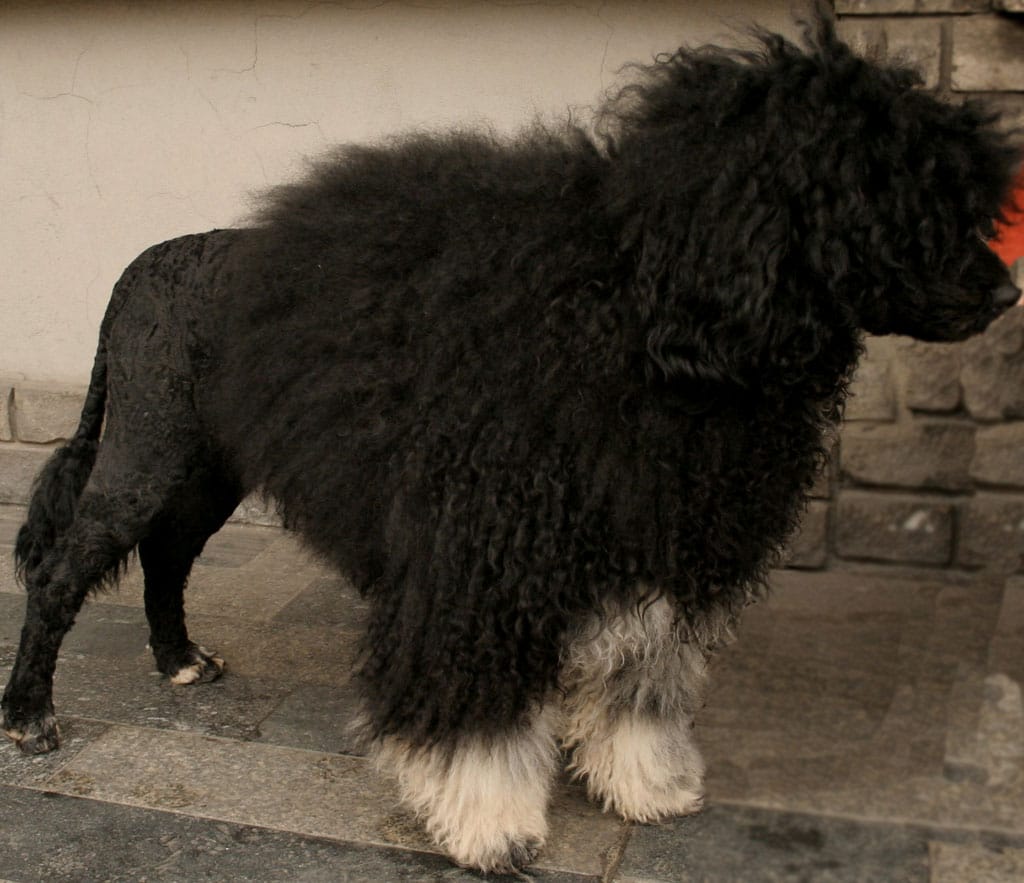
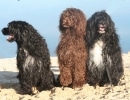
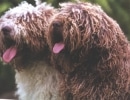
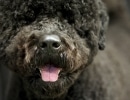
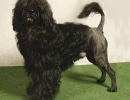
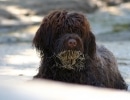
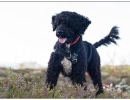
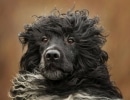
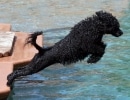

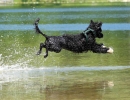

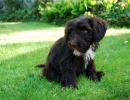
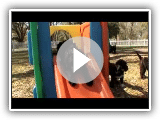 Dogs 101 ~ Portuguese Water Dog
Dogs 101 ~ Portuguese Water Dog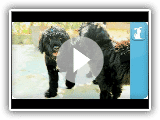 Portuguese Water Dog – Puppy Love
Portuguese Water Dog – Puppy Love Scout the Portuguese Water Dog
Scout the Portuguese Water Dog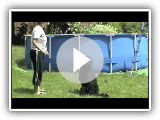 Portuguese Water Dog Splash, Cao de Agua Portugues
Portuguese Water Dog Splash, Cao de Agua Portugues